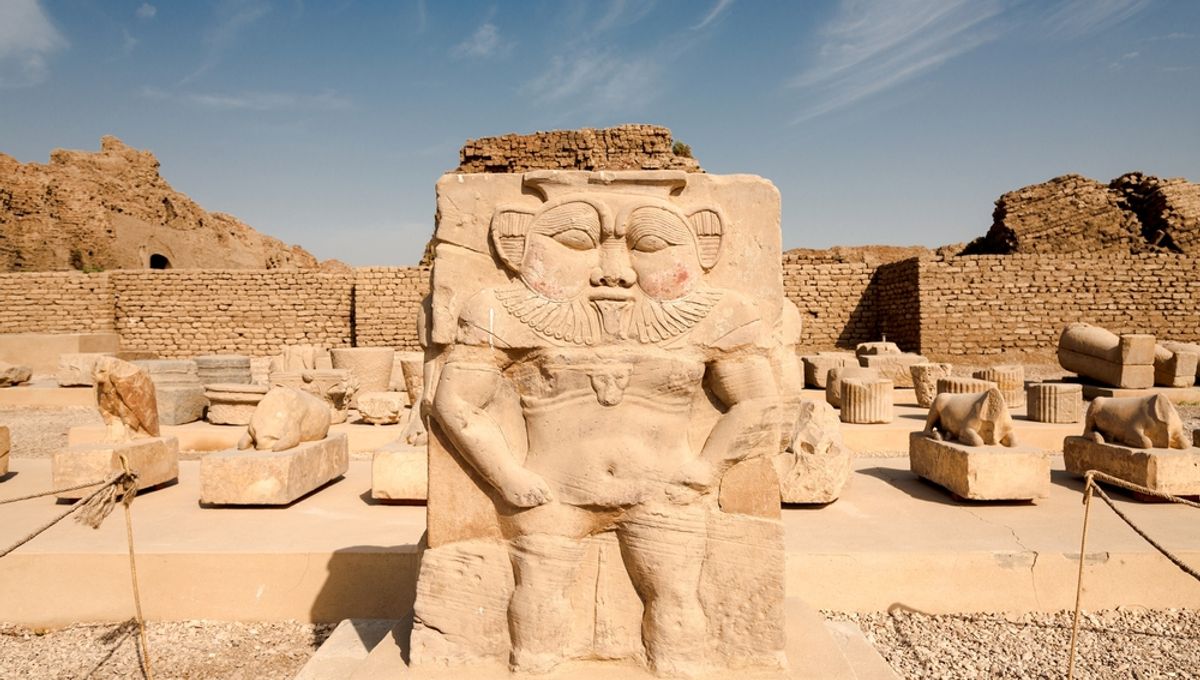
The art of cocktail making has come a long way since the ancient Egyptians tried their hand at mixing drinks, as evidenced by a new analysis of the contents of a 2,000-year-old vase. Thought to have been imbibed by members of a cult who worshiped a strange cat-like god, the concoction was found to contain several hallucinogenic plants, as well as booze, honey and a variety of human bodily fluids.
Describing their discovery in an as yet un-peer reviewed study, the researchers explain that the hardcore drink was probably consumed “for ritual practices” associated with a deity called Bes. Described as “part dwarfish, part feline”, Bes’s followers believed he could provide “protection from danger, while simultaneously averting harm, and being able with his power to prevent evil.”
Like all cults, Bes-heads were required to drink some gnarly stuff. Rather than the classic poisoned Kool-Aid, though, the members of this sect guzzled a mysterious liquid from “ceramic vessels decorated with the effigy or the head of Bes,” known as “Bes-vases.”
“As the Bes figure was revered as a protective genius, it might be assumed that the liquid drunk from these mugs was considered beneficent,” write the researchers. To finally determine the nature of said liquid, they analyzed the organic residues on a Bes-vase from the second century BCE, which was housed at the Tampa Museum of Art.
Results indicated that the drink contained a psychoactive plant called Peganum harmala, more commonly known as Syrian rue. “The seeds of this plant produce high quantities of the alkaloids harmine and harmaline, which induce dream-like visions,” explain the study authors.
Today, Syrian rue is sometimes combined with other plants such as mimosa in order to create a brew that mimics the psychedelic effects of ayahuasca.
Traces of a second psychoactive plant called Nymphaea caerulea – or blue water lilly – were also detected in the Bes-vase. “Combining all these data, we can conclude that Peganum harmala and Nymphaea caerulea plants were deliberately used as sources of psychoactive substances for ritual purposes,” say the researchers.
Not content with these trippy ingredients, however, devotees of Bes spiked their potion with a number of other components. For instance, the researchers also detected traces of an alcoholic liquid derived from fermented fruit, as well as honey or royal jelly.
Rather like a dirty pint, the ancient brew also contained “a high presence of human proteins,” all of which were apparently added for ritual purposes. “This includes fluids like breast milk, mucous fluids (oral or vaginal), and blood,” reveal the authors.
Now that’s how you do a Bloody Mary.
A pre-print version of the yet-to-be-published study is available on Research Square.
Source Link: Ancient Egyptians Drank A Gnarly Brew Of Hallucinogenic Drugs And Human Blood